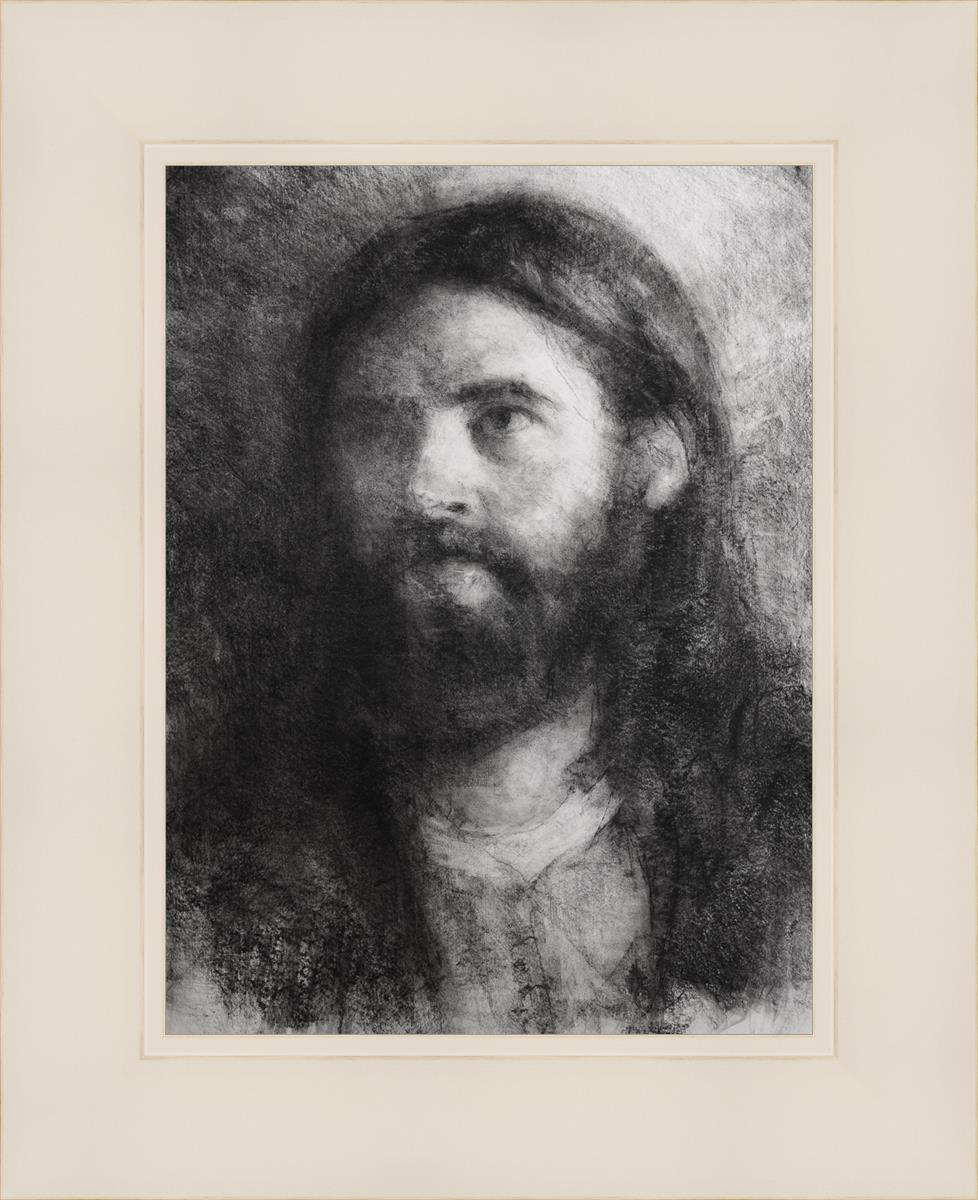Man of Sorrows
Man of Sorrows
SKU:PRG1030461
Story Behind the Art
Story Behind the Art
Isaiah 53: 2-3 teaches us that the Savior has no worldly beauty that we would desire him. That he is a Man of Sorrows “acquainted with grief." The blending of these two elements were very important while I was rendering this charcoal image.
If the Savior looked like a Hollywood Star, how could he know what it was like to not be picked for Prom or to have very few dates? In this drawing, I combined elements from reference and from my memory of a man who didn't appear to be completely physically attractive.
I meddled this with an eye that wasn't completely finished and other features to allow the viewer to complete the drawing in their mind's eye. Using this approach, the viewer is able to behold parts of his face and features that we may look over, features that might be less apparent than when He's performing a mighty act or offering a monumental sermon.
In addition, throughout our lives, we move closer to and away from the Savior; depending on our circumstances, we feel closer to or farther away from the Savior. Throughout His life, His circumstances change. His mission changes. His level of sorrow changes. As a result, His physical appearance changes. His facial expression at this moment purposefully evokes one fact: He knows our pain. I know he is a Man of Sorrows, acquainted with my grief and your grief.
About the Artist
About the Artist
Paul Romeri-Grass brings Christians together through interfaith Christian art events, community and private classes, and paintings on the Life of Christ. Paul believes that art and education can heal wounds. In line with his passion of illustrating the Savior, Paul has created a small interfaith Christian art school, The Religious Academy, where his students have the opportunity to express their love of Christ through their art. As such, a portion of the sales of his prints and originals fund classes for individuals in poverty and crisis, using art as a tool to heal. Paul hosts workshops and art shows around the world where the community can enjoy his and his students' drawings and paintings.
Many community members, who otherwise could not afford a piece of religious art for their home, attend a community workshop where they create their first piece of religious art! Paul's first and foremost passion is creating images of the Savior, depicting events in His life. His prints and originals of the Savior can be found in the ArchDiocese of Colorado, Colorado Christian University, the Denver Stake Center for the Church of Jesus Christ of Latter-day Saints, and in collections and homes throughout the world. His artwork is owned by Nathan Osmond, Donny Osmond, Tonny Rosacci, Kim Purbaugh, Robert Turner, Marta Johnson, and others.
Paul has painted full-time for 12 years in Denver and 2 years in Utah, creating portraits and scripture-based paintings, commissioned by dozens of clients. His style has developed into what Patrick Devonas calls Academic Impressionistic, stating, "The ability to draw realistically is paramount in order to come up with a style of your own.” Academic Impressionism draws on deep emotion and evokes strong and sacred feelings. Realism, infused with the softer edges of impressionism, while focused on light and movement, is what speaks to Paul. Rembrandt, Carl Bloch, Heinrick Hoffman, and Illya Reypin are some of the largest sources of Paul’s inspiration as he paints the Life of Christ.
At Mountain View High School, he passed the AP Art exam while under the tutelage of Steve Laney. He then graduated with a BFA in Illustration from Utah State University (2006). At Utah Valley University, he mentored under Perry Stewart and Patrick Devonas. In 2009, he moved to Denver, Colorado to mentor with painters Quang Ho and Ron Hicks. Paul Romeri-Grass is excited to share his testimony of the Living Christ with you. He hopes his paintings will draw you closer to the Son of God—the One who knows exactly how to succor you in your time of need.
Shipping & Returns
Shipping & Returns
If your order has a time sensitivity that requires expedited shipping, please Contact Us so that we can confirm our ability to meet your time requirements.
We use real-time shipping on this site. The shipping charge on your order is determined at order placement using UPS and USPS shipping rate calculators. If you feel that the shipping charges are incorrect, please Contact Us and let us know of your situation. A real person (not a calculator) will respond during business hours and resolve your issue prior to shipment.
For more information, please refer to the following policies:
Couldn't load pickup availability













































































































































